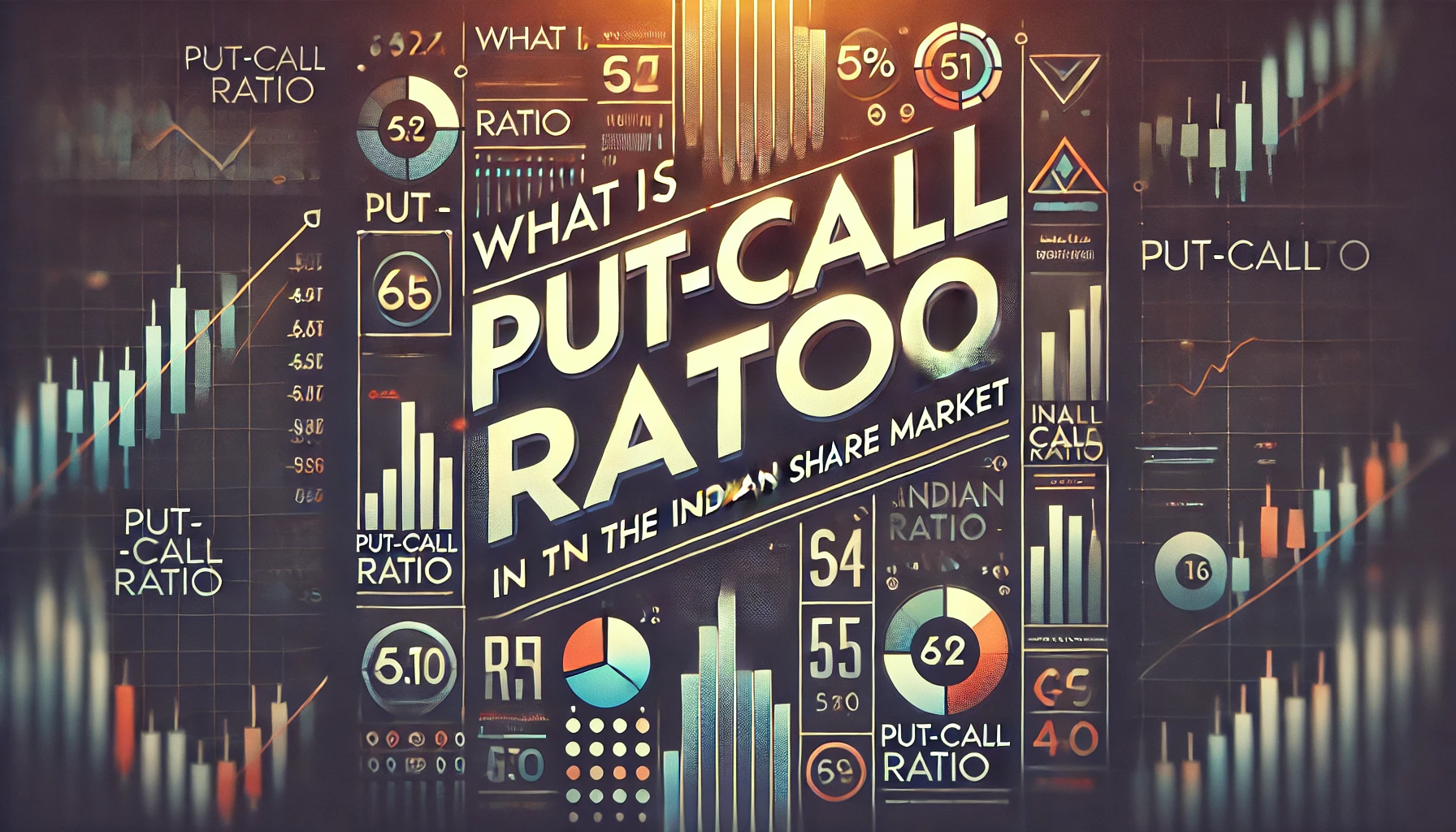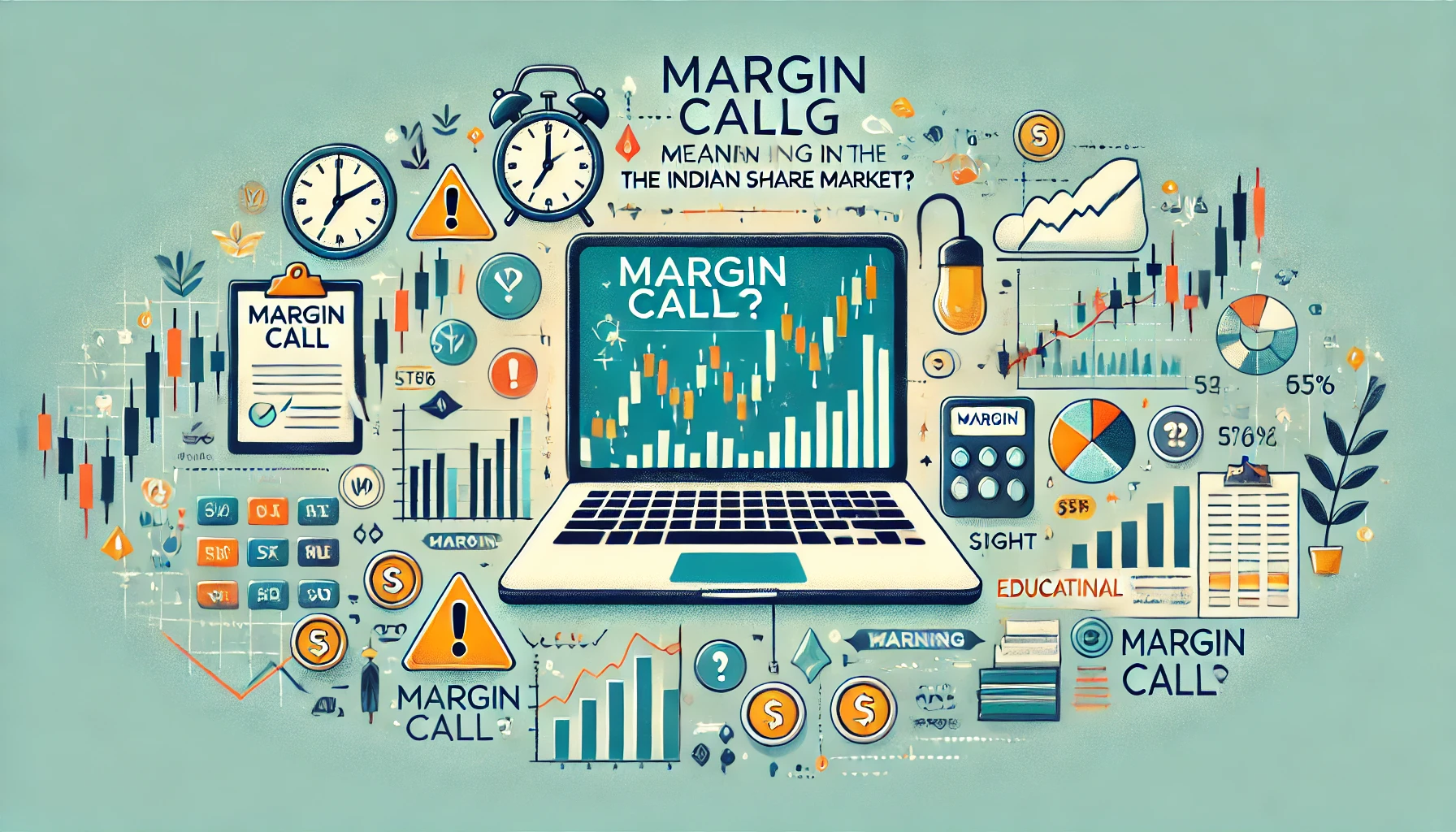In the realm of Indian share market derivatives, implied volatility (IV) plays a crucial role in determining the price of options and gauging market sentiment. It provides traders with a forward-looking indicator of expected price fluctuations, making it an essential tool for risk management and strategic decision-making. Understanding how implied volatility works and its impact on the derivatives market is vital for anyone engaged in options trading, as it can signal periods of market uncertainty or confidence.
This blog will provide an in-depth explanation of implied volatility, how it is calculated, its significance in options trading, and how historical data can offer insights into market movements. We will also examine how traders can use implied volatility to enhance their trading strategies in the Indian share market.
What is Implied Volatility?
Implied volatility refers to the market’s forecast of a likely movement in the price of an underlying asset over the life of an options contract. It is essentially the expected volatility of a security’s price and is derived from the prices of options on that security. Unlike historical volatility, which is based on past price data, implied volatility is forward-looking and reflects the market’s perception of future price swings.
Traders use implied volatility to estimate the likelihood of changes in the price of an underlying asset. A higher implied volatility indicates that the market expects significant price fluctuations, while a lower implied volatility suggests that prices are expected to remain stable.
How is Implied Volatility Calculated?
Implied volatility is calculated using complex mathematical models, with the most widely used being the Black-Scholes model. The formula for implied volatility is not straightforward, as it is derived from the market prices of options rather than calculated directly.
Factors Influencing Implied Volatility:
- Time to Expiration: The longer the time to expiration, the higher the implied volatility tends to be, as more time allows for greater price fluctuations.
- Interest Rates: Changes in interest rates can impact the cost of holding options, indirectly influencing implied volatility.
- Demand for Options: If there is strong demand for options, especially out-of-the-money options, implied volatility tends to rise.
- Market Events: News, earnings reports, and geopolitical events can lead to a sudden increase in implied volatility as traders anticipate price movements.
Black-Scholes Formula Overview:
The Black-Scholes model considers factors such as the current price of the underlying asset, the strike price of the option, the time to expiration, interest rates, and the implied volatility. However, rather than being used to calculate implied volatility directly, the model takes the market price of the option and works backward to estimate IV.
Implied Volatility vs Historical Volatility
It’s important to differentiate between implied volatility and historical volatility:
- Historical Volatility (HV):
This is based on past price movements and reflects the actual volatility observed over a specific time frame. Historical volatility is backward-looking and provides insights into how much an asset’s price fluctuated in the past. - Implied Volatility (IV):
Implied volatility is based on the market’s expectations for future volatility. Since it is derived from options prices, it is forward-looking and represents the market’s anticipation of price movements.
| Type | Description | Focus |
|---|---|---|
| Historical Volatility | Volatility based on past price movements | Backward-looking |
| Implied Volatility | Expected future volatility derived from options | Forward-looking |
Importance of Implied Volatility in Options Trading
Implied volatility plays a pivotal role in options pricing. The higher the implied volatility, the higher the option premium will be, as there is greater uncertainty about the future price of the underlying asset. Conversely, lower implied volatility leads to lower option premiums.
Impact on Option Premiums:
The premium of an option is composed of two elements: intrinsic value and extrinsic value (time value). Implied volatility primarily affects the extrinsic value. Here’s how:
- Call Options:
Higher implied volatility increases the cost of call options because there is a greater chance that the underlying asset’s price will exceed the strike price. - Put Options:
Similarly, put options become more expensive when implied volatility rises, as the likelihood of the asset’s price falling below the strike price increases.
Example:
Assume a trader is looking at a call option on Stock A with a strike price of ₹500. If the implied volatility increases from 20% to 30%, the premium for the call option will rise even if the price of Stock A remains the same. This is because the market expects greater price fluctuations, increasing the chances of the option becoming profitable before expiration.
Historical Data on Implied Volatility in Indian Markets
To understand the role of implied volatility in the Indian share market, let’s look at historical data on the Nifty 50 index options. The India VIX (Volatility Index) is a popular measure of implied volatility for the Indian market, often referred to as the “fear gauge.” It reflects the market’s expectations of volatility over the next 30 days.
India VIX Data (2010-2020):
| Year | Average India VIX | Market Sentiment |
|---|---|---|
| 2010 | 22% | Moderate volatility |
| 2015 | 16% | Low volatility, bullish |
| 2018 | 18% | Moderate volatility |
| 2020 | 45% | High volatility, bearish |
During periods of high market uncertainty, such as the COVID-19 pandemic in 2020, implied volatility spiked, leading to higher option premiums and increased market activity. Traders anticipated large price swings due to the uncertainty, driving up demand for options.
How Traders Use Implied Volatility
- Risk Management:
Traders use implied volatility to assess the risk of their positions. If implied volatility is high, it may indicate greater market uncertainty, leading traders to hedge their positions or reduce exposure. - Volatility Trading Strategies:
Implied volatility itself can be traded. Strategies such as straddles and strangles are designed to profit from changes in implied volatility rather than directional price movements.- Straddle: A strategy where a trader buys both a call and put option with the same strike price, anticipating significant price movement in either direction.
- Strangle: Similar to a straddle, but the call and put options have different strike prices, offering a wider range for profitability.
- Determining Fair Value of Options:
By comparing current implied volatility with historical levels, traders can determine whether an option is overpriced or underpriced. If implied volatility is significantly higher than historical volatility, the option might be overpriced, making it a potential candidate for selling.
Implied Volatility and Market Sentiment
Implied volatility is often viewed as a barometer of market sentiment. A spike in implied volatility typically signals that the market is expecting significant price movements, either due to upcoming events or broader economic uncertainty. Conversely, low implied volatility suggests that market participants are expecting stability and minimal fluctuations in the underlying asset.
Implied Volatility and Earnings Announcements
Implied volatility often rises before major market events, such as earnings announcements, as traders anticipate large price swings. After the event, implied volatility usually falls, a phenomenon known as “volatility crush.” Traders can use this to their advantage by positioning themselves to profit from the decrease in implied volatility following the announcement.
Volatility Smiles and Skew
In practice, implied volatility is not uniform across all strike prices. It tends to vary depending on whether an option is in-the-money, at-the-money, or out-of-the-money. This gives rise to a pattern known as a “volatility smile.”
- Volatility Smile:
Implied volatility is typically higher for out-of-the-money options, both calls and puts, creating a smile-like shape when plotted on a graph. This is due to the greater risk perceived in these options. - Volatility Skew:
Implied volatility may also exhibit a skew, where out-of-the-money put options have higher implied volatility than calls. This is often a reflection of investor concerns about potential market downturns.
Calculating Profit and Loss Based on Implied Volatility
Let’s illustrate how a change in implied volatility can impact the profit or loss on an options trade:
Example: Nifty 50 Call Option
- Current Nifty 50 Price: ₹16,000
- Strike Price: ₹16,200 (Out-of-the-money)
- Implied Volatility: 20%
- Option Premium: ₹100
Now, suppose implied volatility increases to 30%, keeping all other factors constant. The premium might rise to ₹150. If the trader sells the option after the increase in implied volatility, they would realize a profit of ₹50 per option.
Profit=(New Premium−Original Premium)×Number of Contracts
Profit=(₹150−₹100)×100=₹5,000
This demonstrates how a rise in implied volatility, even without a change in the underlying asset’s price, can lead to significant profits for an options trader.
Conclusion
Implied volatility is an essential concept for traders in the Indian share market derivatives. It provides insights into market expectations, influences options pricing, and serves as a key tool for managing risk and developing volatility-based strategies. Understanding implied volatility can help traders make informed decisions about their options trades, whether they are looking to hedge risk or speculate on market movements.
By analyzing historical data and leveraging implied volatility, traders can better navigate the dynamic landscape of the Indian derivatives market.

What Is Implied Volatility?
In the realm of Indian share market derivatives, implied volatility (IV) plays a crucial role …

What is Margin Funding?
Margin funding is a powerful tool in the Indian share market that allows traders to …

Forward vs Future contract
In the Indian share market, derivatives such as forward and future contracts play a pivotal …

What is Margin Money?
Margin money is a crucial aspect of trading in the Indian share market, especially in …

What is Put-Call Ratio?
The Put-Call Ratio (PCR) is one of the most widely used indicators in options trading …

What is Derivatives?
Derivatives are financial instruments whose value is derived from an underlying asset or benchmark. In …

What is Cost of Carry?
The cost of carry is an essential concept in futures trading that reflects the cost …

What is futures
Futures are a fundamental part of derivatives trading in the Indian stock market. They allow …

Bullish Option Strategies
In the ever-evolving world of derivatives trading, options have become a powerful tool for investors …

Understanding Physical Settlement in Futures & Options Contracts: A Comprehensive Guide
In the world of derivatives trading, the concept of physical settlement has gained prominence, particularly …

what are call options
The Indian share market has expanded significantly over the years, attracting a growing number of …

What Is Credit Spread Strategy
In the world of options trading, the credit spread strategy is one of the most …

What Is a Forward Contract
A forward contract is a customized financial agreement between two parties to buy or sell …

Types of Derivatives in India
The Indian derivatives market has grown exponentially, becoming a vital tool for investors and traders …

What is Swaps Derivatives
In the world of derivatives, swaps are a special class of contracts that allow two …

Intrinsic Value and Time Value of Options
Options trading is one of the most widely used financial instruments in the Indian share …

What is Open Interest?
In the world of derivatives, the concept of “Open Interest” plays a crucial role in …

Types of underlying assets in derivatives
The Indian derivatives market has grown exponentially over the last few decades, thanks to its …

derivatives on Option Volatility & Pricing Strategies
The Indian share market derivatives segment is a dynamic environment where advanced traders rely heavily …

What is Futures Contract
The Indian share market offers various financial instruments that provide opportunities for investors and traders. …

What is implied volatility in options?
In the world of options trading, one of the most crucial elements to understand is …

Futures Pricing Formula
The Indian share market is known for its dynamic nature and offers various opportunities for …

What is an ITM Call Option?
The world of options trading is filled with technical terms that are crucial for investors …

What is Max Pain Theory?
The Indian share market is full of strategies and theories that traders use to predict …

What is OTM Call Options
In options trading, terms like “in the money” (ITM), “at the money” (ATM), and “out …

What Is Rollover
Rollover is a common term in the world of futures and derivatives trading, especially in …

Futures Prices Converge Upon Spot Prices
In the world of financial markets, futures contracts play a significant role. One of the …

Call Ratio Back Spread
In the Indian share market, advanced trading strategies such as the Call Ratio Back Spread …

Margin Call Meaning
A margin call is one of the most critical warnings in trading, often marking a …

What is Bermuda Option?
The financial markets are full of complex instruments, and one such tool is the Bermuda …


















